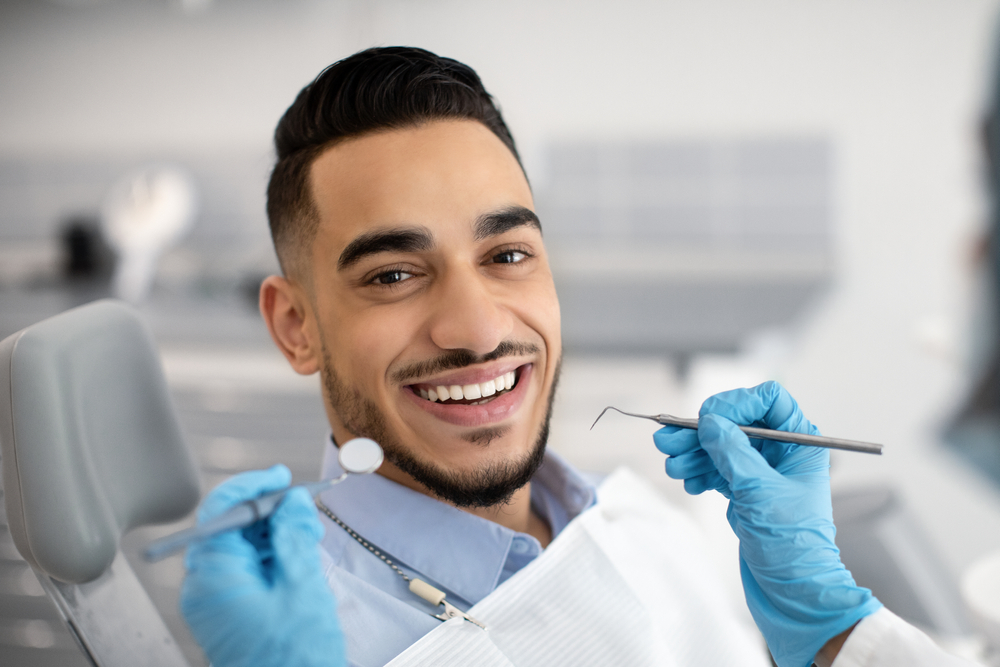
An oral cancer screening checks your mouth for cancer before developing any symptoms. Cancers in the mouth include oral cancer, tongue cancer, and jaw cancer. The screening is a simple process that lasts five minutes. It can help you detect oral cancer early when it is much easier to treat.
By the time signs appear, oral cancer may have started to spread. If the screening detects abnormal tissue in your mouth, your dentist will do more tests to check for oral cancer. Remember, your dentist is not necessarily thinking that you have oral cancer if he or she recommends screening.
What Happens During an Oral Cancer Screening?
The dentist will observe your mouth and throat for thick white spots and unusually red patches. Areas of your mouth that your dentist will examine include the lips, tongue, gums, tonsils, inner part of your cheeks, and the roof and floor of your mouth.
Sometimes, your dentist will use special lights and dyes to check for symptoms of oral cancer. These examinations comprise:
Fluorescence Staining
During this test, the dentist uses a special light to look for lesions inside your mouth. At the start of the procedure, your dentist will ask you to rinse your mouth using a fluorescent mouthwash. The mouthwash will make your mouth’s healthy tissue look different from unusual tissue when your dentist examines your mouth under the light.
Toluidine Blue Stain
Toluidine blue is a dye that dentists use to identify cancerous tissues in the mouth. The toluidine blue stain exam coats your mouth with a blue dye. Parts of the mouth that tint darker could point to cancer or the possibility of these parts becoming cancerous.
Brush Biopsy
A brush biopsy procedure uses a special brush designed to remove cells from lesions, to collect cells for testing. Then, the dentist observes the cells under a microscope to check if they are abnormal.
Exfoliative Cytology
As the name suggests, exfoliative cytology exfoliates or peels off cells from your mouth. The technique uses a tiny wooden stick or a brush to gently chafe cells from the tongue, lips, or mouth. The dentist looks at the cells under a microscope to check for abnormalities.
How Often Should You Get an Oral Cancer Screening?
Dentists recommend having frequent oral cancer screenings. Adults above 20 years old should go for screening every three years, while those above 40 should go for the exam every year.
Likewise, people at a higher risk of getting oral cancer should see their dentist every year for screening. These include adults who:
- Use tobacco
- Use alcohol
- Have human papillomavirus (HPV)
- Have a family history of cancer
- Get extreme sun exposure
- Eat poorly
Risks of Oral Cancer Screening
Oral cancer screening comes with risks. The screening results may show that you have tested negative for oral cancer even though it exists. Similarly, you may test positive for oral cancer even though the cancer is not present or get misdiagnosed.
Also, there is no guarantee that early detection and treatment will boost your health or make you live longer. Cancer treatments such as radiotherapy and surgery may have grave after-effects. Before having an oral cancer screening, talk to your dentist about the risks and whether screening will lower your risk of succumbing to cancer.
For more on what an oral cancer screening entails, call John K. See, DDS, at (805) 920-8600 to reach our office in Camarillo, California.










